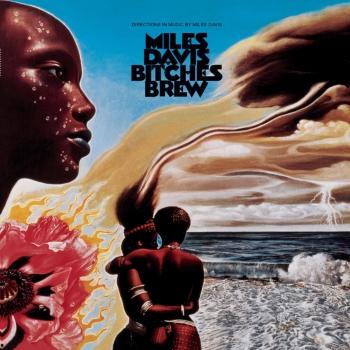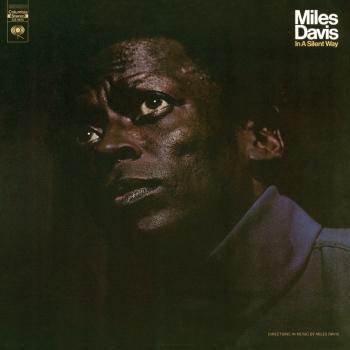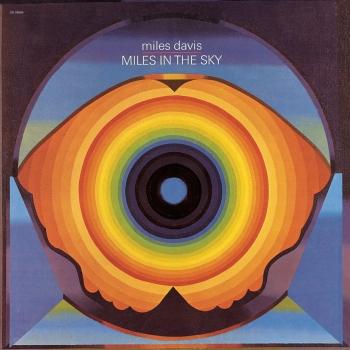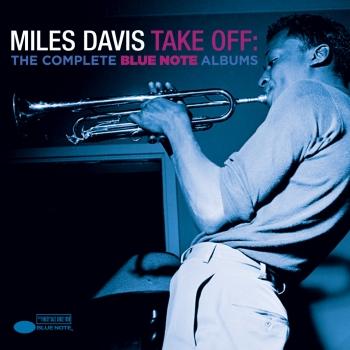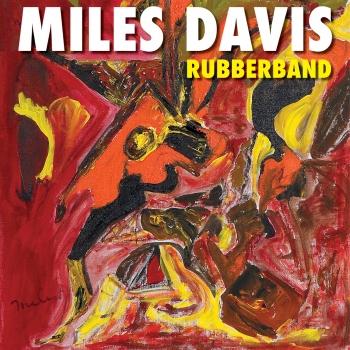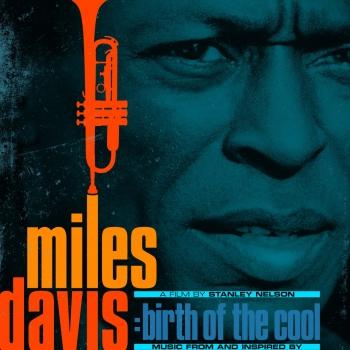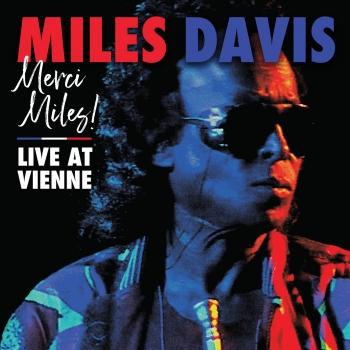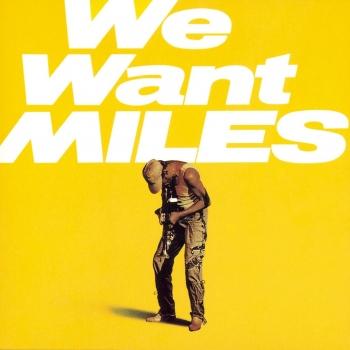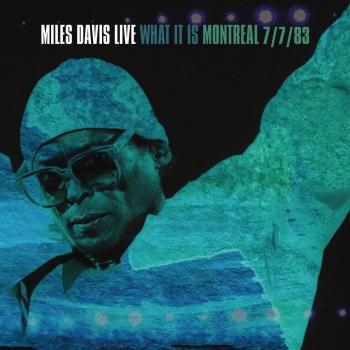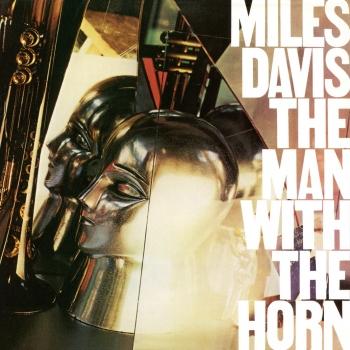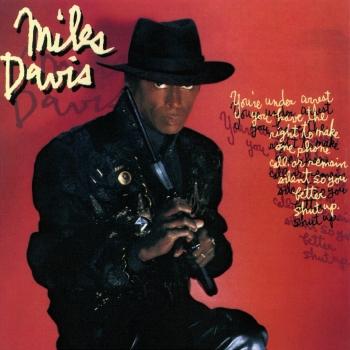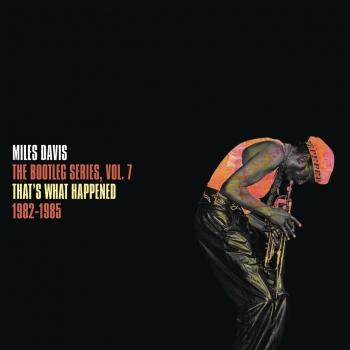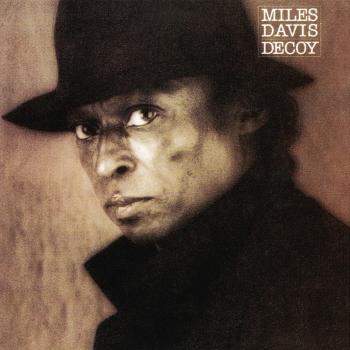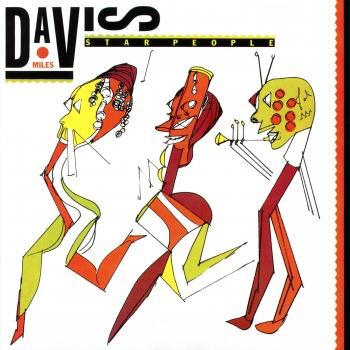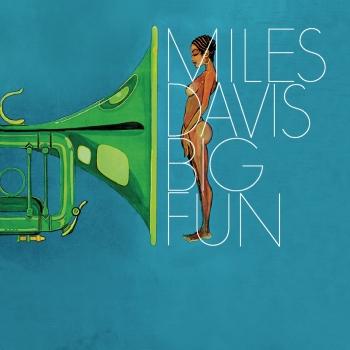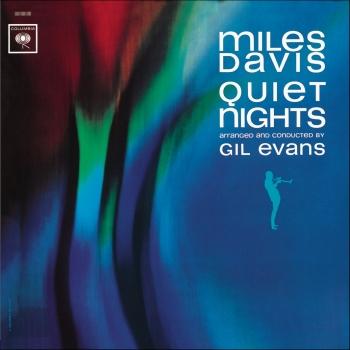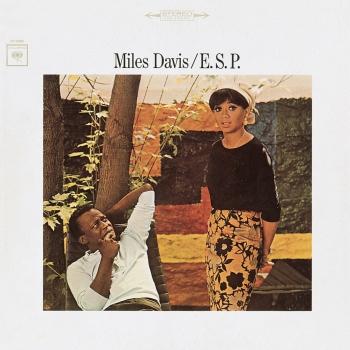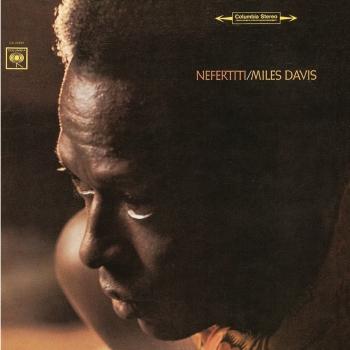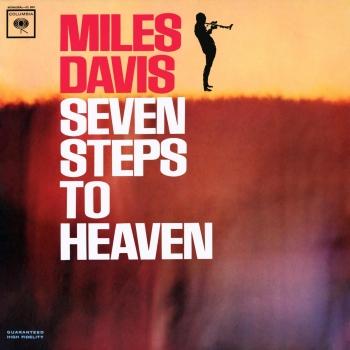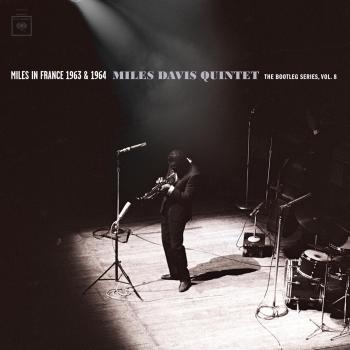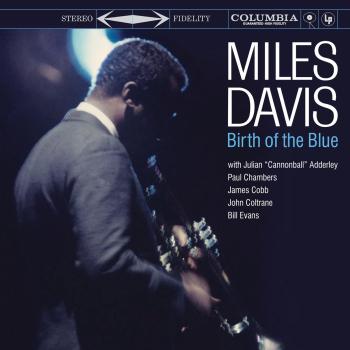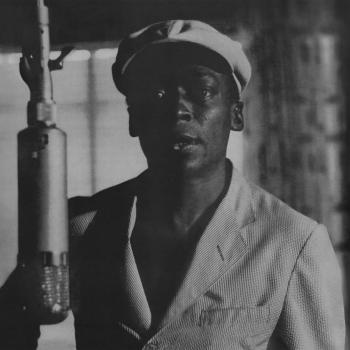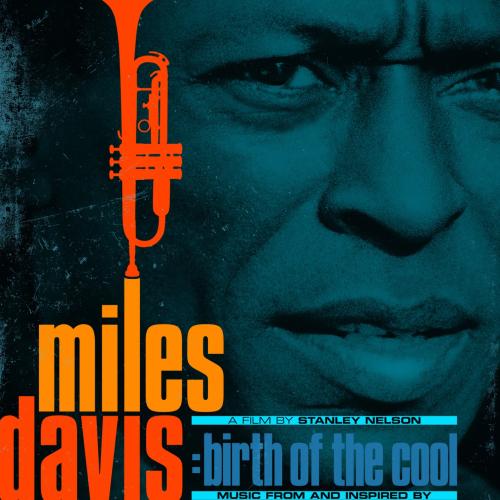
Music From and Inspired by The Film Birth Of The Cool (Remastered) Miles Davis
Album info
Album-Release:
2020
HRA-Release:
07.02.2020
Album including Album cover
I`m sorry!
Dear HIGHRESAUDIO Visitor,
due to territorial constraints and also different releases dates in each country you currently can`t purchase this album. We are updating our release dates twice a week. So, please feel free to check from time-to-time, if the album is available for your country.
We suggest, that you bookmark the album and use our Short List function.
Thank you for your understanding and patience.
Yours sincerely, HIGHRESAUDIO
- 1 Commentary: Herbie Hancock, Jimmy Heath 00:30
- 2 Milestones 05:43
- 3 Commentary: Greg Tate 00:19
- 4 Donna Lee 02:34
- 5 Commentary: Ashley Kahn, Symphony Sid Introduction 00:30
- 6 Moon Dreams 03:20
- 7 Commentary: George Wein 00:30
- 8 Round Midnight 05:55
- 9 Commentary: Carlos Santana 00:30
- 10 It Never Entered My Mind 05:20
- 11 Commentary: Vincent Bessieres 00:44
- 12 Générique (Mono Version) 02:47
- 13 Commentary: Jimmy Cobb 00:30
- 14 So What 09:22
- 15 Commentary: Gil Evans 00:11
- 16 New Rhumba 04:37
- 17 Commentary: Frances Taylor Davis 00:30
- 18 The Pan Piper 03:52
- 19 Commentary: Jack Chambers 00:30
- 20 Someday My Prince Will Come 09:02
- 21 Commentary: Wayne Shorter 00:30
- 22 Footprints 09:46
- 23 Commentary: Carlos Santana, Quincy Troupe 00:30
- 24 Miles Runs the Voodoo Down (45-rpm Single Edit) 02:49
- 25 Commentary: Marcus Miller 00:17
- 26 Tutu 05:16
- 27 Commentary: Erin Davis 00:13
- 28 Hail To The Real Chief 03:41
Info for Music From and Inspired by The Film Birth Of The Cool (Remastered)
"Miles Davis: Birth of the Cool" premiered at the 2019 Sundance Film Festival and was an official selection at the 2019 BFI London Film Festival. The film has been screened in limited runs in select theaters in the U.S., Canada and Europe capped by a screening during the London Jazz Festival at the Barbican on November 16.
Nelson's documentary has been hailed by critics as an engaging key to understanding the life, art and genius of Miles Davis. Owen Gleiberman, praised the movie in Variety (January 30, 2019) as ».... a tantalizing portrait: rich, probing, mournful, romantic, triumphant, tragic, exhilarating, and blisteringly honest.... Nelson is a filmmaker with a sixth sense for how to nudge history into the present.« The San Francisco Chronicle's Joel Selvin called the "New Miles Davis doc an essential portrait of iconic jazz genius" (September 3, 2019).
"I remember stealing my father's copy of ›Kind of Blue‹ to take with me to college. I've been fascinated with Miles since then and have long dreamed of telling his story. He was to me a singular force of nature; the very embodiment of cool«, said the director Stanley Nelson. "This film is very special to me and curating the soundtrack gave me a chance to delve even deeper into his archive so that both diehard fans and his new listeners could discover something new."
With full access to the Miles Davis Estate, the film features never-before-seen footage, including studio outtakes from his recording sessions, rare photos and new interviews with Quincy Jones, Carlos Santana, Clive Davis, Wayne Shorter and Ron Carter, among others. Select interview soundbites are included as commentary tracks on the album.
Birth of the Cool is a compilation album by American jazz musician Miles Davis, released in 1957 on Capitol Records. It compiles eleven songs recorded by Davis's nonet for the label over the course of three sessions during 1949 and 1950. Featuring unusual instrumentation and several notable musicians, the music consisted of innovative arrangements strongly inspired by classical music, and marked a major development in post-bebop jazz. As the title implies, these recordings are considered seminal in the history of cool jazz. The majority of the recordings on the record are under three minutes. The album has since been reissued many times. Blue Note recently released a version using the original tapes from Rudy Van Gelder, who produced the album.
Gil Evans contributed some charts to the sessions, acting as an advisor to a group of musicians who had met in his small New York apartment above a Chinese laundry. Evans had gained a reputation in the jazz world for his orchestration of bebop tunes for the Claude Thornhill orchestra, including Davis's "Donna Lee". Davis was seeking an alternative to the small groups typical of contemporary jazz (he was a member of Charlie Parker's quintet at the time), and in 1947 started to organize the loose circle of musicians into a working group. Rehearsals and experiments took place over the next year.
The nonet performed live only briefly—initially for a two week engagement in late August and early September 1948 at the Royal Roost Club in New York. Billed as the "Miles Davis Band", the group at this time consisted of Davis (trumpet), Mike Zwerin (trombone), Bill Barber (tuba), Junior Collins (French horn), Gerry Mulligan (baritone saxophone), Lee Konitz (alto saxophone), John Lewis (piano), Al McKibbon (bass), and Max Roach (drums). Former Dizzy Gillespie vocalist Kenny Hagood was featured on a few songs. Unusually, the arrangers (Mulligan, Evans and Lewis) were given credit. The group returned to the Royal Roost later in September, and recordings from 4 September and 18 September 1948 were included on the 1998 Complete Birth of the Cool CD, alongside the later studio sides. There was a further short residency the following year at the Clique Club, but the nonet was not a financial success, and disbanded. In 1949 Davis had a contract with Capitol to record twelve sides for 78 rpm singles. He thus reformed the nonet to record three sessions in January and April 1949 and March 1950. Davis, Konitz, Mulligan and Barber were the only musicians who played on all three sessions, though the instrumental lineup was constant (excepting the omission of piano on a few songs). Originally released as singles, eight of the tracks were compiled in 1953 on a 10" vinyl record in Capitol's "Classics In Jazz" series (H-459), one track ("Boplicity") was published as part of the 1953 compilation "Cool and Quiet" (H-371). Birth of the Cool was released in 1957 as a 12" LP that added the remaining two unreleased instrumental pieces ("Move" and "Budo"). The final track, "Darn That Dream" (the only song with vocals, by Hagood), was included with the other eleven on a 1971 LP. Subsequent releases have been based on this last arrangement.
Musically, the songs on Birth of the Cool stand as an important reaction to the prominent bebop form in contemporary jazz. Though the break can be exaggerated—Charlie Parker participated in the discussions Evans led, most of the musicians were drawn from the bebop scene, and many continued to play in that style for years afterward—it inspired a whole school of jazz musicians, particularly in California in what is usually referred to as "West Coast jazz" or the "cool school".
Miles Davis, trumpet
Lee Konitz, alto saxophone
Gerry Mulligan, baritone saxophone
Al McKibbon, bass
Joe Schulman, bass
Nelson Boyd, bass
Kenny Clarke, drums
Max Roach, drums
Junior Collins, french horn
Gunther Schuller, french horn
Sandy Siegelstein, french horn
Al Haig, piano
John Lewis, piano
J.J. Johnson, trombone
Kai Winding, trombone
John Barber, tuba
Trumpeter Miles Davis grew up in East St. Louis, Illinois, just across the river from St. Louis, Missouri. His parents were affluent, and had the means to support his musical studies as a boy. He began playing the cornet at age nine, and received his first trumpet at around twelve or thirteen. He studied classical technique, and focused mainly on using a rich, clear tone, something that helped define his sound in later years.
As a teenager, he played in various bands in St. Louis, which was rich with jazz, as big bands often stopped there on tours throughout the Midwest and southern states. The most important experience he had was when he was asked to play in the Billy Eckstine band for a week as a substitute. The group included Charlie Parker, Dizzy Gillespie, and Sara Vaughan. After playing with these stars, Davis knew he had to move to New York to be at the heart of the jazz scene.
In Pursuit of Parker:
In 1944 Davis moved to New York City where he had earned a scholarship to study trumpet at the Juilliard School of Music. Upon arriving however, he sought after Charlie Parker, and meanwhile spent all of his time in jazz clubs listening to bebop. He was transfixed on the music, and grew utterly bored with his classical studies. After less than a year at Juilliard, he dropped out and tried his hand at performing jazz.
Although not particularly stunning, his playing was good enough to finally attract Charlie Parker, and Davis joined his quintet in 1945. He was often criticized for sounding inexperienced, and was compared unfavorably to Dizzy Gillespie and Fats Navarro, who were the leading trumpeters at the time. Both boasted stellar technique and range, neither of which Davis possessed. In spite of this, he made a lasting impression on those who heard him, and his career was soon set aloft.
Cool Jazz and a Rise to Fame:
Encouraged by composer and arranger Gil Evans, Davis formed a group in 1949 that consisted of nine musicians, including Lee Konitz and Gerry Mulligan. The group was larger than most bebop ensembles, and featured more detailed arrangements. The music was characterized by a more subdued mood than earlier styles, and came to be known as cool jazz. In 1949 Davis released the album Birth of the Cool (Captiol Records).
Change of artistic direction became central to Davis’ long and increasingly influential career. After dabbling in hard bop as a leader on four Prestige recordings featuring John Coltrane, he signed with Columbia records and made albums that featured Gil Evans’ arrangements for 19-piece orchestra. These were Miles Ahead, Porgy and Bess, Sketches of Spain, and Quiet Nights. He rose in popularity with these recordings, in part due to his signature sound, which he often enhanced by using a Harmon mute.
Kind of Blue and Beyond:
In 1959 Davis made his pivotal recording, Kind of Blue. It was a departure from all of his previous projects, abandoning complicated melodies for tunes that were sometimes only composed of two chords. This style became known as modal jazz, and it allows the soloist expressive freedom since he does not have to negotiate complex harmonies. Kind of Blue also featured John Coltrane, Cannonball Adderley, and Bill Evans. The album is one of the most influential in jazz, and is Columbia Records’ best-selling jazz record of all time.
In the mid 1960s Davis changed directions again, forming a group with Herbie Hancock, Wayne Shorter, Tony Williams, and Ron Carter. This group was known for the excellence of each individual member, and also for its unique performance approach. Each night the tunes would sound different, as the musicians would sometimes only loosely adhere to the song structures, and often transition from one right into the next. Each player was given the chance to develop his solos extensively. Like all of Davis’ previous groups, this quintet was highly influential.
Late Career:
Despite health problems, drug addiction, and strained personal relationships, Davis continued to play, changing his approach with each new project. In the late 60s and 70s, he began to experiment with electronic instruments, and grooves that were tinged with rock and funk music. Two famous recordings from this period are In a Silent Way and Bitches Brew. By the time the 1980s rolled around, Davis was not only a jazz legacy, but a pop icon, whose music, persona, and fashion style were legendary.
Davis died in 1991, as perhaps the most influential jazz artist ever. His vast body of work continues to be a source of inspiration for today’s musicians. (Jacob Teichroew, About.com Guide)
This album contains no booklet.











